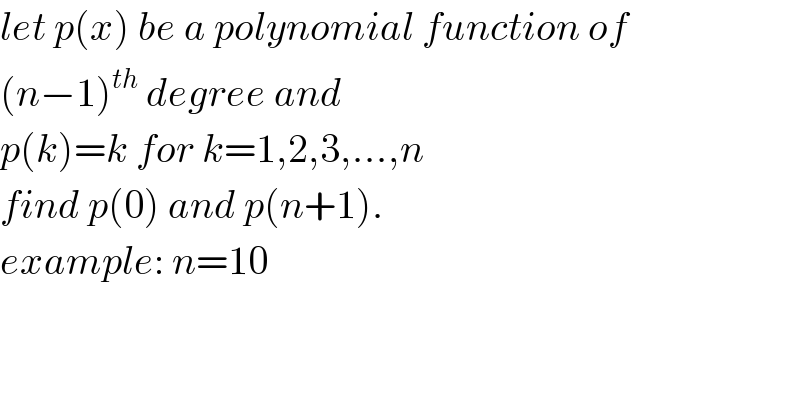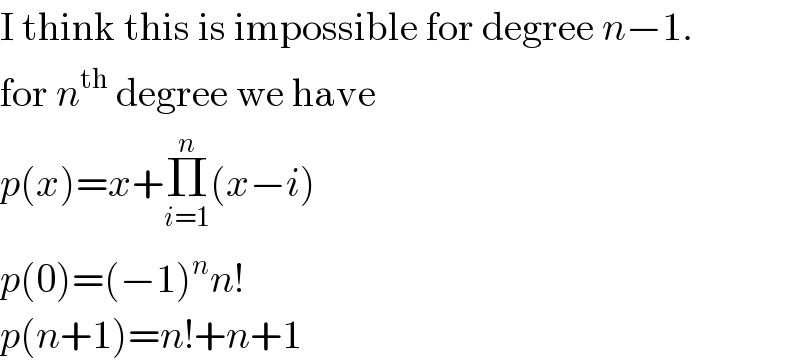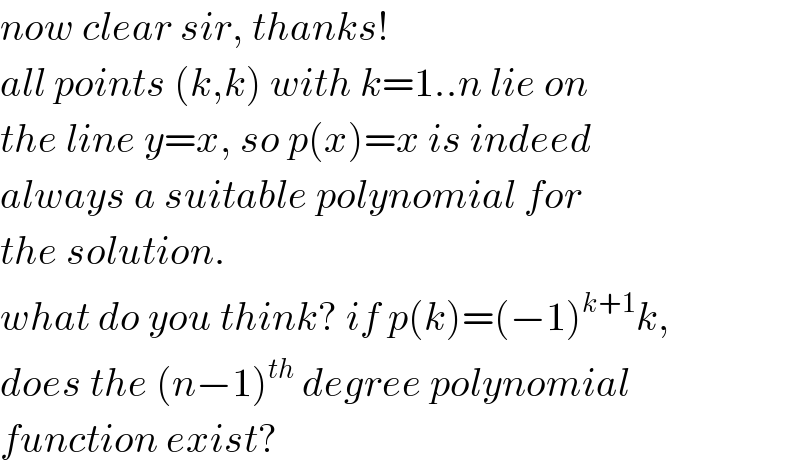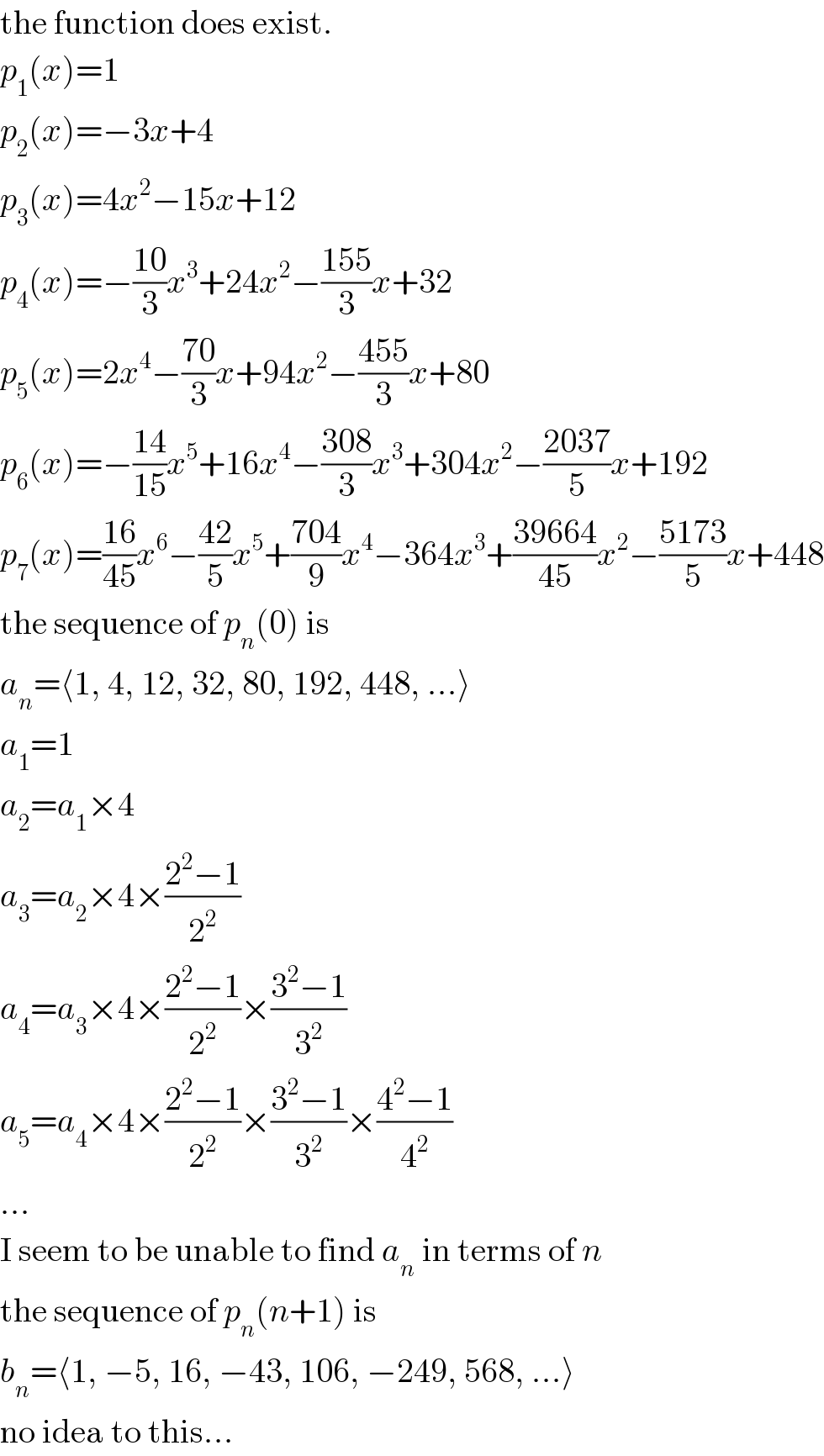
Question and Answers Forum
Question Number 98268 by mr W last updated on 16/Jun/20

Commented by MJS last updated on 13/Jun/20

Commented by mr W last updated on 13/Jun/20

Commented by MJS last updated on 13/Jun/20

Commented by mr W last updated on 13/Jun/20

Commented by MJS last updated on 14/Jun/20

Commented by mr W last updated on 14/Jun/20
![thanks very much sir! is following the right path to solve? say p_n (x)=Σ_(k=0) ^(n−1) c_(n,k) x^k p_n (r)=Σ_(k=0) ^(n−1) c_(n,k) r^k =(−1)^(r+1) r [(1,1,1,(...),1),(1,2,2^2 ,(...),2^(n−1) ),(1,3,3^2 ,(...),3^(n−1) ),((...),(...),(...),(...),(...)),(1,n,n^2 ,(...),n^(n−1) ) ] ((c_(n,0) ),(c_(n,1) ),(c_(n,2) ),((...)),(c_(n,n−1) ) )= ((1),((−2)),(3),((...)),(((−1)^(n+1) n)) ) ⇒ ((c_(n,0) ),(c_(n,1) ),(c_(n,2) ),((...)),(c_(n,n−1) ) )= [(1,1,1,(...),1),(1,2,2^2 ,(...),2^(n−1) ),(1,3,3^2 ,(...),3^(n−1) ),((...),(...),(...),(...),(...)),(1,n,n^2 ,(...),n^(n−1) ) ]^(−1) ((1),((−2)),(3),((...)),(((−1)^(n+1) n)) )](Q98512.png)
Commented by MJS last updated on 15/Jun/20

